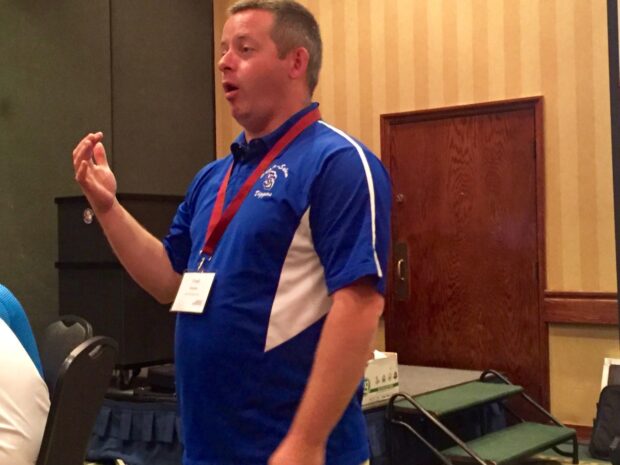Educators from across Idaho devoted two of their final days of summer vacation to helping students continue their education after high school.
More than 200 counselors and teachers met in Boise for the State Department of Education’s Advanced Opportunities conference, which wrapped up Tuesday.
The goals of the conference align with the state’s flagship education goal: having 60 percent of young adults hold a postsecondary degree or certificate by 2020.
Teachers, counselors and higher education professionals learned about best practices for helping students continue their education, developed networks and discovered national and local resources for their schools and students.
Fred Woolley, a counselor at East Idaho’s Sugar-Salem School District, relied on his experience as a standup comedian to engage the audience Tuesday. Woolley, who also teaches dual-credit psychology courses through Brigham Young University-Idaho and the College of Southern Idaho, led a workshop called “Creating a College-Going Environment in Rural Schools.”
Before he discussed go-on rates and FAFSA financial aid application deadlines, he broke the ice by having teachers mimic the sounds of horses, cows and roosters.

Within moments, the room filled with laughter and the “moos,” “nays” and “cock-a-doodle-doos” that became part of the barnyard symphony Woolley conducted.
“Welcome to conference session everyone else is going to want to be at later,” Woolley joked.
The audience soon broke into groups and shared several ideas for transforming their rural schools into college-going environments.
Among the ideas:
- Planting a seed with juniors, and emphasizing that a high school diploma alone won’t be the ticket to the future many teens envision.
- Meeting with all students and parents at the beginning of senior year to discuss deadlines, financial aid and navigating the complex admissions process.
- Making application and financial aid information available at parent-teacher conferences and back-to-school nights.
- Planning college visits around a fun campus activity, such as a football game, to show students school spirit alongside academic life.
- Holding college-themed Fridays, where students and faculty wear gear from their future university or alma mater.
- Creating and updating a database for counselors that lists every senior, where he or she has applied to college and where they are in the admissions process.
- Throwing a “Parade of Champions” where all college-bound seniors wear their university colors and parade through high schools or middle schools.
“We live in a certification society, where it is not just what you know, but what you have on a piece of paper that shows what you know that helps you get the job,” Woolley said.
As his workshop ended, Woolley encouraged all participants to turn what they learned into an actionable go-on plan for the upcoming school year.
He also warned educators that they will need to focus on planning and communication skills if they hope to increase go-on rates. He relayed several personal anecdotes that illustrated how simple misunderstandings can lead to resistance from unexpected sources — including administrators and fellow teachers.
“All audiences will be resistant to change unless you can reduce their anxiety through good planning and communication,” Woolley said.
